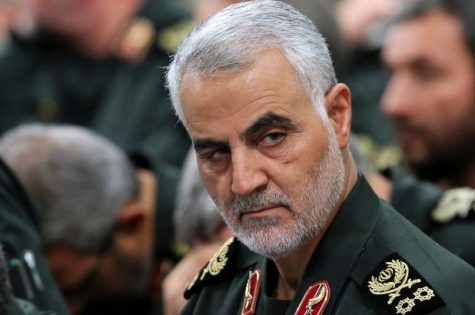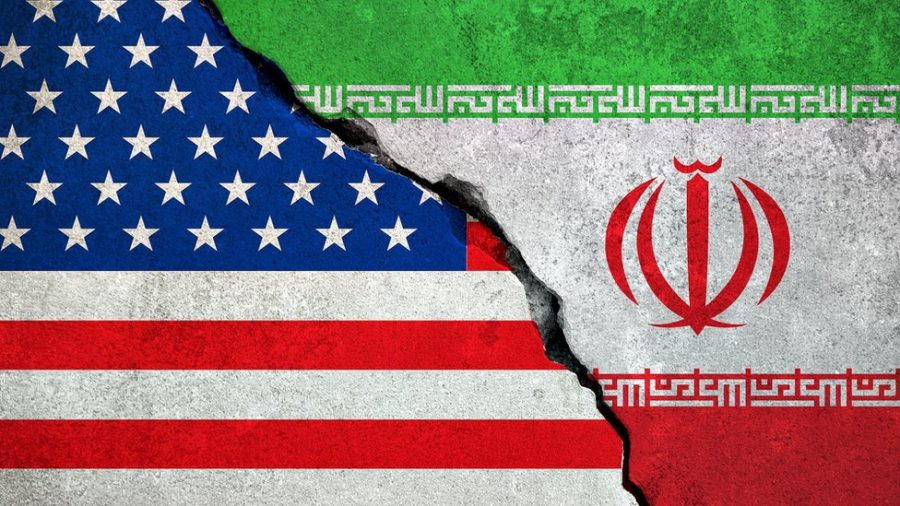The Iran Situation: General Soleimani’s assassination, current tensions, and how we got here
January 10, 2020
- Featured image credit: BBC
On January 3rd, 2020, high-profile Iranian General Qassem Soleimani was killed by an airstrike ordered by President Donald Trump.

The motivations for this decision are not entirely clear; however, the Department of Defense claims Soleimani was “actively developing plans to attack American diplomats and service members in Iraq and throughout the region,” and accused him of being behind the protests conducted against the U.S. Embassy in Baghdad that occurred earlier in the week. As a consequence, Iran vowed that a “harsh retaliation is waiting” for those behind the General’s assassination- and, as a consequence to this consequence, President Trump stated that the U.S. has “targeted 52 Iranian sites” of “[importance] to Iran and the Iranian culture,” with each site representing vengeance for one of the 52 Americans held hostage for 444 days at the U.S. Embassy in 1979. The U.S. shortly thereafter backed down from these threats, as, in accordance with the 1954 Hague Convention signed by the U.S., targeting cultural sites is a war crime. Iran, however, decided to go through with its threats of retaliation, firing missiles at U.S. military bases in Ain Al-Assad and and Irbil, both locations in Iraq. Thankfully early detection measures allowed U.S. forces to take appropriate action to prevent any casualties, and it appears that, for the time being, this attack is revenge enough in the eyes of Iran. However, Iran may have hit more than these two air bases with their missiles, as around the time of these strikes, Ukrainian International Airlines flight PS752 crashed after taking off from Imam Khomeini Airport in Tehran, killing all 176 on board. Secretary of State in the U.S. Mike Pompeo claims that it is “highly likely” that the airline went down as a result of being hit with an Iranian missile. Pompeo does assert, however, that “all indications are that the passenger jet was hit by mistake, likely because the Iranian air defenses were on a state of high alert as they launched a barrage of ballistic missiles at U.S. facilities.” A proper investigation is still underway that will hopefully, conclusively determine the cause of the crash.
Through tensions seem to be de-escalating for the time being, Iran and the U.S. are nonetheless still absolutely at odds with each other. But this is nothing new for these two countries. Animosity between the U.S. and Iran has been a steady part of their relations since the 1950’s, when the democratically-elected Prime Minister of Iran, Mohammad Mossadeq, was ousted by a U.S.-backed coup. During this time, the U.S. also showed a strong support for the Shah, or King, of Iran, Reza Pahlavi, who in turn created a number of Modernization policies that attempted to turn the country away from traditional Islamic values. These compounding factors lead to a strongly anti-American sentiment among the general populous of Iran, which eventually culminated in the Iranian Revolution in 1979. These protests saw the return of religious leader Ayatollah Ruhollah Khomeini from exile, who eventually replaced Shah Pahlavi and became Iran’s supreme leader. This time of extreme turmoil came to a head when a revolutionary group took 52 American diplomats hostage for 444 days at the U.S. Embassy in Tehran. Though the hostages were successfully freed in 1981, this was not before President Carter severed all diplomatic relations between the U.S. and Iran- the state in which they have remained ever since.
Shortly after the turn of the century, an Iranian opposition group revealed that the country had been developing nuclear facilities, including a nuclear enrichment plant. The U.S. accused Iran of using nuclear technology to create weaponry, though Iran obviously denied these allegations. As a result of this, the U.S., U.N., and E.U. all imposed harsh sanctions against Iran’s conservative president Mahmoud Ahmadinejad over the following decade. This resulted in severe economic harm to Iran, including a 2/3s drop in value of Iran’s currency in just two years. Iran’s poor fiscal state prompted president Obama to form what is often referred to as the “Iran Nuclear Deal” (though its actual name is the Joint Comprehensive Plan of Action) with Iran’s new, moderate, president Hassan Rouhani. Under the deal, crippling economic sanctions were lifted off of Iran in exchange for requiring Iran to cease nuclear developments- with Iran’s end of the deal being intended to be ensured through the use of international inspectors.
However, in May of 2018, President Trump withdrew from the JCPOA, as he claimed that the “Iranian regime supports terrorism and exports violence, bloodshed and chaos across the Middle East. That is why we must put an end to Iran’s continued aggression and nuclear ambitions,” arguing that they had not lived up to the “spirit of the agreement” (Trump also sited the fact that the restrictions on Iran’s nuclear program were not indefinite under the JCPOA, and did have an eventual expiration date). As the result of the sanctions that were reinstated against Iran, its economy plummeted once again. In early to mid 2019, 6 explosions hit U.S. oil tankers in the Gulf of Oman, something that the U.S. blamed on Iran. In June of 2019, a U.S. surveillance drone was shot down by Iran over disputed territory; the U.S. claiming the incident occurred over international waters, while Iran claimed the drone had entered their territory.
The progressing conflicts between the U.S. and Iran throughout the whole of 2019 lead to Iran slowly, but surely, reducing its adherence to the JCPOA. However, after the assassination of Soleimani in January of 2019, Iran decided to completely withdraw from the Nuclear Deal. Many have now taken to blaming Trump for forging a political climate in which Iran would take an action as drastic as this; however, critics of the deal assert that Iran likely has never fully adhered to the JCPOA in the first place, meaning that these developments would make very little difference.
President Trump appears to be standing down Iran’s most recent actions against U.S. airbases. However, some- particularly democrats- still fear that Trump may act in a way that could further escalate tensions, possibly even leading to war. As outlined in the U.S. constitution, only congress has the power declare war. However, as commander-in-chief, the president can often conduct certain military operations against foreign countries without congressional approval. This is why, even though the last time congress officially declared war was during WWII, the U.S. has seen plenty of conflict in the decades since. This is also how Trump was initially able to assassinate Soleimani- an action that he did not, and did not have to, first clear with congress. As a result, the House of Representatives voted in favor of a War Powers resolution to limit the president’s ability to “[introduce] United States Armed Forces into hostilities” before consulting with congress in “every way possible.” The resolution passed the House 224-194, mostly along party lines. The first War Powers Resolution was passed in 1973 after secret bombings in Cambodia were conducted by President Nixon without congressional approval during the Vietnam War. Since then, it has seen varying degrees of application, with many presidential actions (such as Clinton’s actions in Kosovo and Obama’s operations in Libya) having been criticized due to their lack of compliance with the resolution. However, after 9/11, president George W. Bush signed the Authorization for Use of Military Force (AUMF), which allowed the president “to use all necessary and appropriate force against those nations, organizations, or persons he determines planned, authorized, committed, or aided the terrorist attacks that occurred on September 11, 2001, or harbored such organizations or persons, in order to prevent any future acts of international terrorism against the United States by such nations, organizations or persons.” Another, separate AUMF was signed in 2002 “to defend the national security of the United States against the continuing threat posed by Iraq.” With the passing of these pieces of legislation, the use of the original War Resolution Act’s powers has progressively diminished. The second War Powers Resolution seeks to revive the intent of the initial resolution. Though it passed the House, the legislation is likely not to become law as it faces an uphill battle in the Republican-Controlled senate.
Hopefully tensions between Iran and the U.S. continue to reduce; however, developments in the situation are still very much occurring.


